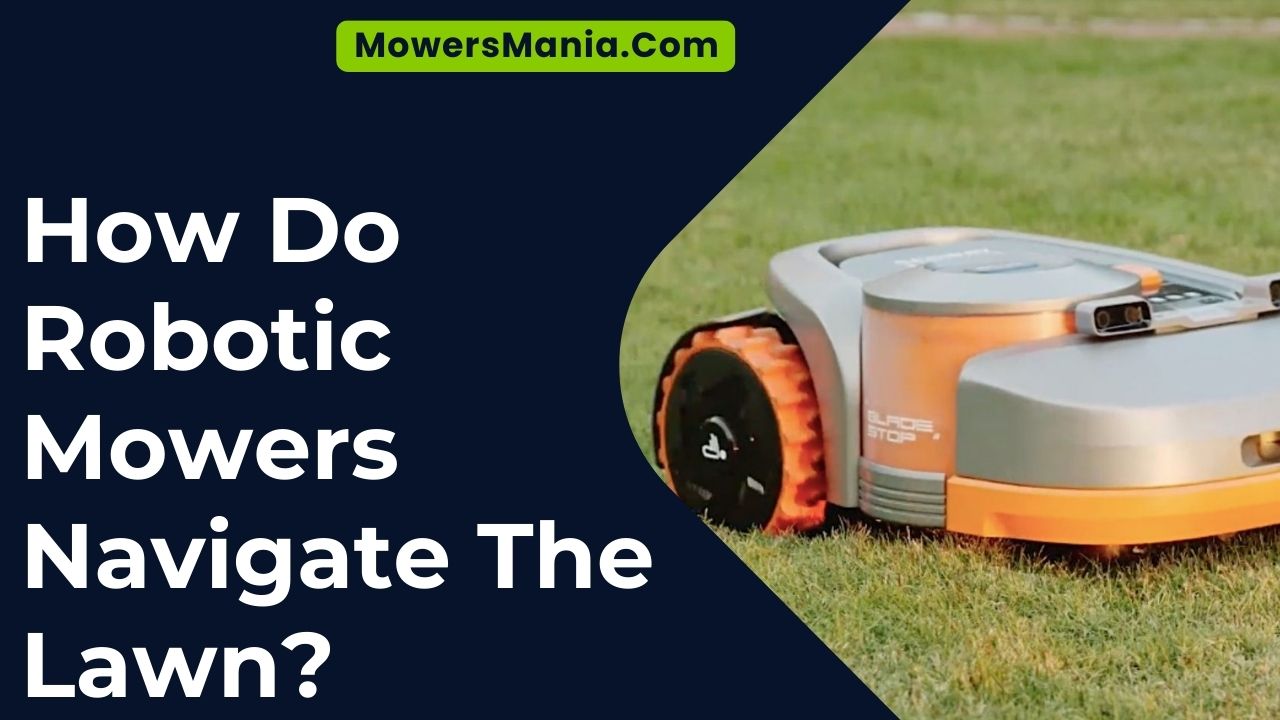As you watch your robotic mower gracefully gliding across your lawn, you might wonder, ‘How does it know where to go?’
Robotic mowers navigate the lawn using cutting-edge technology that allows them to move with precision and efficiency.
Advanced sensors and mapping capabilities enable them to detect obstacles, follow a predefined path, and even avoid virtual boundaries.
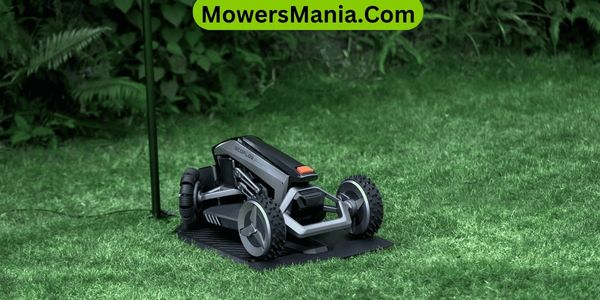
With the help of GPS integration and boundary wire, these smart machines can navigate complex landscapes and ensure a perfectly manicured lawn.
By understanding the innovative navigation systems of robotic mowers, you can appreciate the seamless choreography of their movements as they keep your lawn looking its best.
Evolution of Robotic Mower Navigation
You’ve probably wondered how robotic mowers have improved their navigation over time. Well, it all started with basic random navigation patterns.
Early robotic mowers would move in a random direction until they bumped into an obstacle, then they’d change direction and continue mowing. This method was inefficient and often resulted in missed spots.
But as technology advanced, so did the navigation capabilities of robotic mowers. Manufacturers began implementing boundary wires that the mowers could detect and follow, creating a more systematic approach to lawn mowing. This allowed for more precise navigation and reduced the likelihood of missing areas.
Furthermore, with the integration of GPS and advanced sensors, robotic mowers have become even more sophisticated in their navigation.
They can now create a virtual map of the lawn and navigate through it in a methodical and efficient manner. This advancement has significantly improved the overall performance of robotic mowers, ensuring that they can cover the entire lawn without missing a spot.
Advanced Sensor Technology
Improving robotic mower navigation relies heavily on advanced sensor technology. These sensors, including ultrasonic, infrared, and bump sensors, play a crucial role in detecting and navigating around obstacles in the lawn.
Ultrasonic sensors emit high-frequency sound waves and measure the time it takes for the waves to bounce back. This allows the mower to accurately gauge the distance to objects and obstacles in its path.
Infrared sensors work by emitting infrared light and measuring the reflection off objects. This enables the mower to identify and avoid obstacles in its way.
Bump sensors help the mower react when it comes into contact with an obstacle. They assist in changing direction to navigate around the obstruction.
Some robotic mowers also utilize GPS and boundary wires to create virtual maps of the lawn. This helps them navigate efficiently and cover the entire area.
Mapping and GPS Integration
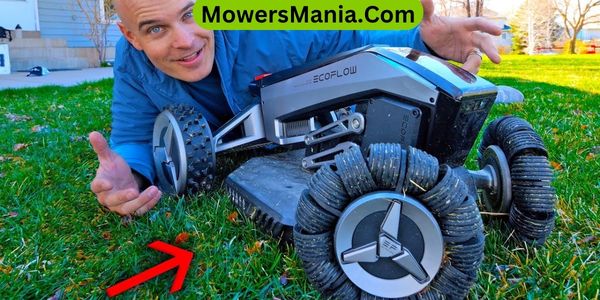
To enhance the robotic mower’s navigation capabilities, integrate a GPS system to create precise virtual maps of the lawn.
This integration allows the robotic mower to accurately determine its position and adapt its mowing pattern accordingly.
By utilizing GPS technology, the mower can create detailed maps of the lawn, including obstacles, boundaries, and specific mowing zones. This enables the robotic mower to navigate efficiently and cover the entire lawn with minimal overlap.
| GPS Integration Benefits | Description |
|---|---|
| Precision Mapping | Utilizes GPS coordinates to create accurate virtual maps of the lawn. |
| Adaptive Navigation | Enables the mower to adjust its mowing pattern based on the mapped terrain and obstacles. |
| Efficient Coverage | Ensures comprehensive and efficient coverage of the entire lawn area. |
| Boundary Recognition | Recognizes predefined boundaries and avoids crossing into restricted areas. |
| Dynamic Mowing Zones | Allows for the creation of specific mowing zones within the lawn for customized maintenance. |
Boundary Wire and Virtual Fencing
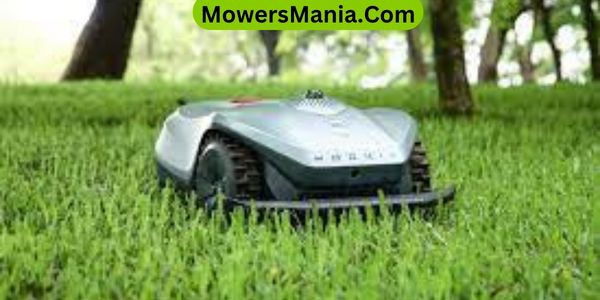
With boundary wire and virtual fencing, robotic mowers establish designated mowing areas within the lawn for efficient navigation and boundary recognition.
The boundary wire, usually a thin, low-voltage wire, is laid around the perimeter of the mowing area and any obstacles within it. This wire emits a signal that the robotic mower can detect, enabling it to stay within the designated area.
Virtual fencing, on the other hand, uses GPS technology to create a digital boundary map that the mower follows. It allows you to define specific zones within the lawn, ensuring that the mower only operates within these pre-determined boundaries.
The boundary wire and virtual fencing not only guide the robotic mower but also prevent it from straying into areas where it shouldn’t be mowing, such as flower beds, swimming pools, or other off-limits zones.
When the mower encounters the boundary wire or virtual fence, it changes direction and continues mowing within the set parameters.
This technology gives you peace of mind, as you can trust that the mower will stick to the areas where it’s needed without the risk of damaging other parts of the lawn or garden.
Obstacle Detection and Avoidance
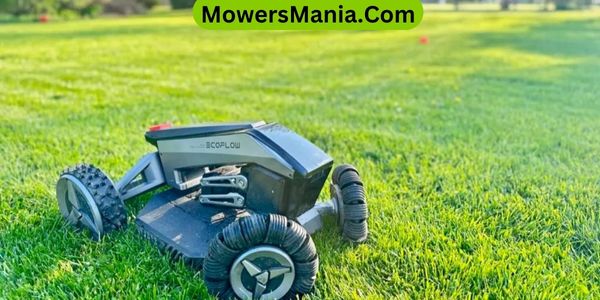
When mowing, your robotic mower utilizes sensors to detect and avoid obstacles in its path. These sensors, typically ultrasonic or infrared, constantly scan the surroundings to identify objects such as trees, rocks, or garden decorations.
Once an obstacle is detected, the mower adjusts its path to navigate around it, ensuring a smooth and uninterrupted mowing process.
The obstacle detection system works in real-time, allowing the robotic mower to react quickly to any obstructions that may appear on the lawn. This capability not only prevents the mower from colliding with objects but also protects the obstacles themselves from damage.
In addition to sensors, some advanced robotic mowers also employ collision avoidance algorithms to enhance their ability to maneuver around obstacles. These algorithms analyze the sensor data and make rapid decisions to steer the mower away from potential collisions.
Frequently Asked Questions [FAQs]
Can Robotic Mowers Be Controlled Remotely From a Smartphone or Computer?
Yes, robotic mowers can be controlled remotely from a smartphone or computer. You can easily adjust settings, schedule mowing times, and even monitor the progress of your robotic mower from the convenience of your device.
How Do Robotic Mowers Handle Different Types of Terrain, Such as Slopes or Uneven Surfaces?
Handling different types of terrain, such as slopes or uneven surfaces, is managed by robotic mowers through advanced sensors and adaptive navigation systems. They automatically adjust their mowing patterns to handle various landscapes effectively.
What Kind of Maintenance Is Required for the Boundary Wire and Virtual Fencing System?
You’ll need to regularly inspect and maintain the boundary wire and virtual fencing system. Check for any damage, exposed wires, or loose connections. Keep the boundary wire clear of debris and ensure proper functioning of the virtual fencing system.
Do Robotic Mowers Have the Ability to Adjust Their Cutting Patterns Based on the Weather or Grass Growth Rate?
Yes, robotic mowers can adjust their cutting patterns based on the weather and grass growth rate. They use sensors to detect changes and adapt their mowing schedule to ensure optimal lawn maintenance in varying conditions.
Are There Any Potential Safety Concerns or Hazards Associated With Using a Robotic Mower?
Are there any potential safety concerns or hazards associated with using a robotic mower? Ensure proper installation of boundary wires to avoid tripping hazards. Regularly check for debris and ensure proper maintenance for safe operation.
Conclusion
In conclusion, robotic mowers use advanced sensor technology, mapping, GPS integration, boundary wires, and obstacle detection to navigate the lawn. These features allow them to efficiently and autonomously mow the lawn without human intervention.
As technology continues to advance, we can expect even more sophisticated navigation systems in robotic mowers, making lawn maintenance easier and more convenient for homeowners.

